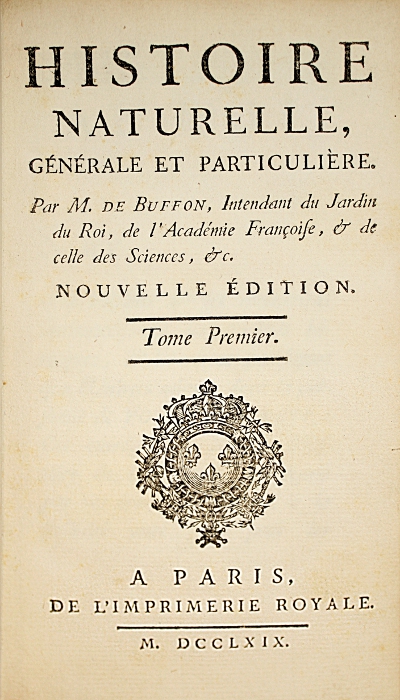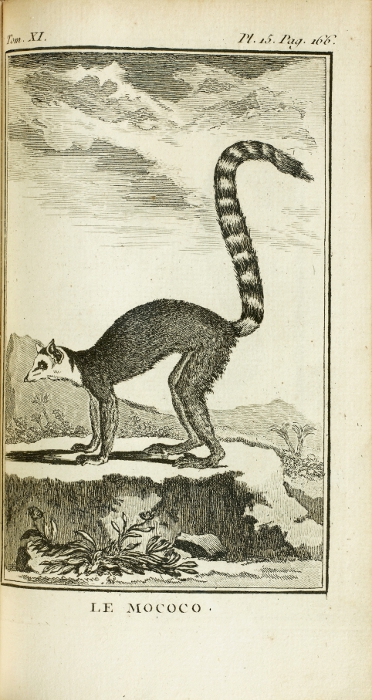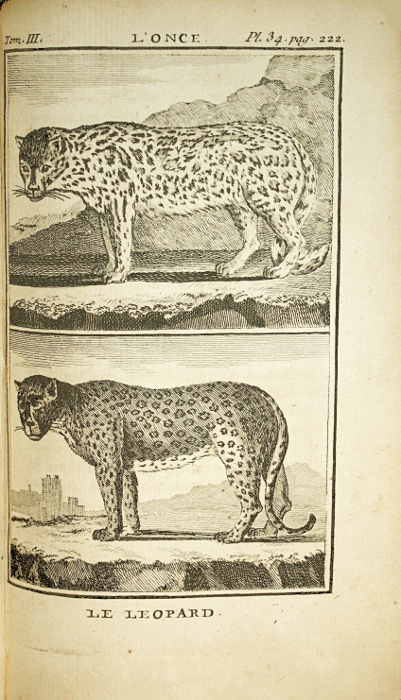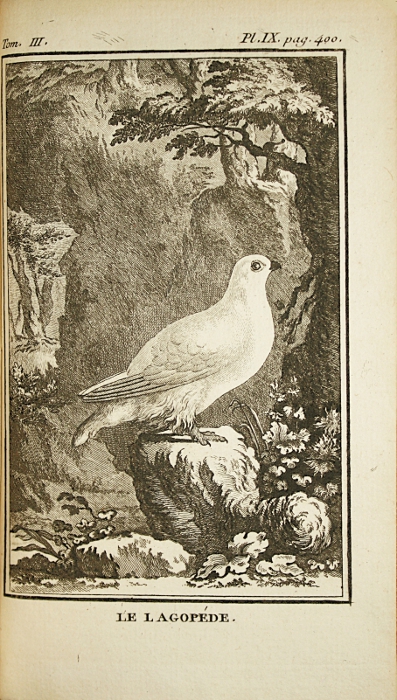BUFFON, Georges Louis Leclerc. Histoire naturelle, générale et particulière. Followed by : – Histoire naturelle des oisêux. Paris, de l’Imprimerie Royale, 1769-1772.
13 volumes for the Natural History and 4 volumes for the Birds, that is a total of 17 volumes 12mo [167 x 98 mm] illustrated with a folding table, 2 folding maps and 263 engravings including 56 for the Birds. Complete. Bound in full uniform contemporary red morocco, triple gilt fillet on the covers, flat spines finely decorated with a bird tool at the foot, gilt inner border, gilt edges. Contemporary uniform binding.
First 12mo edition, whose publication sprêd from 1752 to 1805. As usual, the present copy was built up by an amateur at the time, who selected 17 volumes printed from 1769 to 1772 (the 13 volumes of the Natural History) to which he added 4 volumes of the Birds (see Brunet, I, 1377).
Buffon’s grêt natural history, illustrated with hundreds of engravings and maps. This was one the of most ambitious and complete works of the scientific literature.
“The Natural History” is a work of encyclopedic nature, conceived and undertaken by the naturalist Georges-Louis Leclerc, count of Buffon (1707-1788), written by himself and, under his direction, by a têm of scientists and writers. It was when he was appointed administrator of the King’s Garden (the current Jardin des Plantes) that Buffon, who was living surrounded by the collections of the royal Cabinet of Natural History (that was to become the Natural History Museum) conceived the idê of this grandiose work. His vast project intended to cover all the nature’s productions by classifying and explaining them methodically.
“The Natural History” achieved grêt success from the publication of the first volumes. Buffon was admired in all Europe and instantly became as famous as Voltaire or Roussêu. He was called “the Pliny and the Aristotle of France”; he entered the French Academy without taking a single step; a statue of him was erected during his lifetime. The Natural History appêred, rightly, as one of the modern science and minds awakening’s masterpieces, as the Encyclopedia, which is contemporary. Anyway, it deserved credit for putting in the spotlight not these amateurs’ experiments that were in favor with the society people, but the true science of observation, and it instantly aroused an intense development of natural sciences.
Buffon stuck to this plan all along a publication that went on during 40 yêrs, from 1749 to 1788.
It was the first attempt of a plêsant and refined popularization of the study of natural history that caused a discovery and a craze from the cultivated audience and a desire to protect this science among the sovereigns and grêt people. But we hardly know copies colored at the time.
Parts VI to XII are about quadrupeds, part XIII is a general table, parts XIV to XVII are about birds.
A superb copy built up by an amateur of the time, preserved in its contemporary uniform binding with flat spines decorated with the bird tool. The present work is very rarely found uniformly bound in contemporary morocco.
See less information






